The approach used in this answer
An additional range parameter is added to the backing model to indicate the highlight range for text in the cell.
The cellValueFactory uses a binding statement to allow the cell to respond to updates to either the text in the cell or the highlight range.
Labels within an HBox are used for the cell graphic rather than a
TextFlow as labels have more styling options (e.g. for text
background) than text nodes in TextFlow.
Using multiple labels within the cells does change some of the eliding behavior of the cell when not enough room is available in the column to include all text, this could be customized by setting properties on the HBOX or label to configure this behavior how you want.
CSS stylesheet for styling is included in the code but could be
extracted to a separate stylesheet if desired.
I didn't thoroughly test the solution, so there may be logic errors around some of the boundary conditions.
Screenshots
Highlighted a subset of text within a cell in a non-selected row:

Highlighted a subset of text within a cell in a selected row:

Example code
import javafx.application.Application;
import javafx.beans.binding.Bindings;
import javafx.beans.property.*;
import javafx.geometry.Insets;
import javafx.scene.Node;
import javafx.scene.Scene;
import javafx.scene.control.Label;
import javafx.scene.control.TableCell;
import javafx.scene.control.TableColumn;
import javafx.scene.control.TableView;
import javafx.scene.layout.HBox;
import javafx.scene.layout.VBox;
import javafx.stage.Stage;
public class HighlightedTextTableViewer extends Application {
private static final String CSS_DATA_URL = "data:text/css,";
private static final String HIGHLIGHTABLE_LABEL_CSS = CSS_DATA_URL + // language=CSS
"""
.highlightable {
-fx-font-family: monospace;
-fx-font-weight: bold;
}
.highlight {
-fx-background-color: cornflowerblue;
-fx-text-fill: white;
}
""";
private static final String HIGHLIGHTABLE_STYLE_CLASS = "highlightable";
private static final String HIGHLIGHTED_STYLE_CLASS = "highlight";
@Override
public void start(Stage stage) {
TableView<Field> table = createTable();
populateTable(table);
VBox layout = new VBox(
10,
table
);
layout.setPadding(new Insets(10));
layout.setPrefHeight(100);
stage.setScene(new Scene(layout));
stage.show();
}
private TableView<Field> createTable() {
TableView<Field> table = new TableView<>();
TableColumn<Field, String> nameColumn = new TableColumn<>("Name");
nameColumn.setCellValueFactory(
p -> p.getValue().nameProperty()
);
TableColumn<Field, Field> valueColumn = new TableColumn<>("Value");
valueColumn.setCellValueFactory(
p -> Bindings.createObjectBinding(
p::getValue,
p.getValue().valueProperty(), p.getValue().highlightRangeProperty()
)
);
valueColumn.setCellFactory(param -> new HighlightableTextCell());
//noinspection unchecked
table.getColumns().setAll(nameColumn, valueColumn);
return table;
}
public static class HighlightableTextCell extends TableCell<Field, Field> {
protected void updateItem(Field item, boolean empty) {
super.updateItem(item, empty);
if (item == null || empty || item.getValue() == null) {
setGraphic(null);
} else {
setGraphic(constructTextBox(item));
}
}
private Node constructTextBox(Field item) {
HBox textBox = new HBox();
textBox.getStylesheets().setAll(HIGHLIGHTABLE_LABEL_CSS);
textBox.getStyleClass().add(HIGHLIGHTABLE_STYLE_CLASS);
int from = item.getHighlightRange() != null ? item.getHighlightRange().from() : -1;
int valueLen = item.getValue() != null ? item.getValue().length() : -1;
int to = item.getHighlightRange() != null ? item.getHighlightRange().to() : -1;
if (item.highlightRangeProperty() == null
|| from >= to
|| from > valueLen
) { // no highlight specified or no highlight in range.
textBox.getChildren().add(
createStyledLabel(
item.getValue()
)
);
} else {
textBox.getChildren().add(
createStyledLabel(
item.getValue().substring(
0,
from
)
)
);
if (from >= valueLen) {
return textBox;
}
textBox.getChildren().add(
createStyledLabel(
item.getValue().substring(
from,
Math.min(valueLen, to)
), HIGHLIGHTED_STYLE_CLASS
)
);
if (to >= valueLen) {
return textBox;
}
textBox.getChildren().add(
createStyledLabel(
item.getValue().substring(
to
)
)
);
}
return textBox;
}
private Label createStyledLabel(String value, String... styleClasses) {
Label label = new Label(value);
label.getStyleClass().setAll(styleClasses);
return label;
}
}
private void populateTable(TableView<Field> table) {
table.getItems().addAll(
new Field("Dragon", "93 6d 6d da", null),
new Field("Rainbow", "0c fb ff 1c", new Range(3, 8))
);
}
}
class Field {
private final StringProperty name;
private final StringProperty value;
private final ObjectProperty<Range> highlightRange;
public Field(String name, String value, Range highlightRange) {
this.name = new SimpleStringProperty(name);
this.value = new SimpleStringProperty(value);
this.highlightRange = new SimpleObjectProperty<>(highlightRange);
}
public String getName() {
return name.get();
}
public StringProperty nameProperty() {
return name;
}
public void setName(String name) {
this.name.set(name);
}
public String getValue() {
return value.get();
}
public StringProperty valueProperty() {
return value;
}
public void setValue(String value) {
this.value.set(value);
}
public Range getHighlightRange() {
return highlightRange.get();
}
public ObjectProperty<Range> highlightRangeProperty() {
return highlightRange;
}
public void setHighlightRange(Range highlightRange) {
this.highlightRange.set(highlightRange);
}
}
record Range(int from, int to) {}
Alternative using TextField
An alternative to the HBox for displaying highlighted text would be to use a TextField (non-editable), which allows a selection to be set (via APIs on the text field), however, I did not attempt a solution with a TextField approach. A TextField may allow a user to drag the mouse to select text (perhaps could be disabled if desired by making the field mouse transparent).
Related Questions (uses TextFlow)


